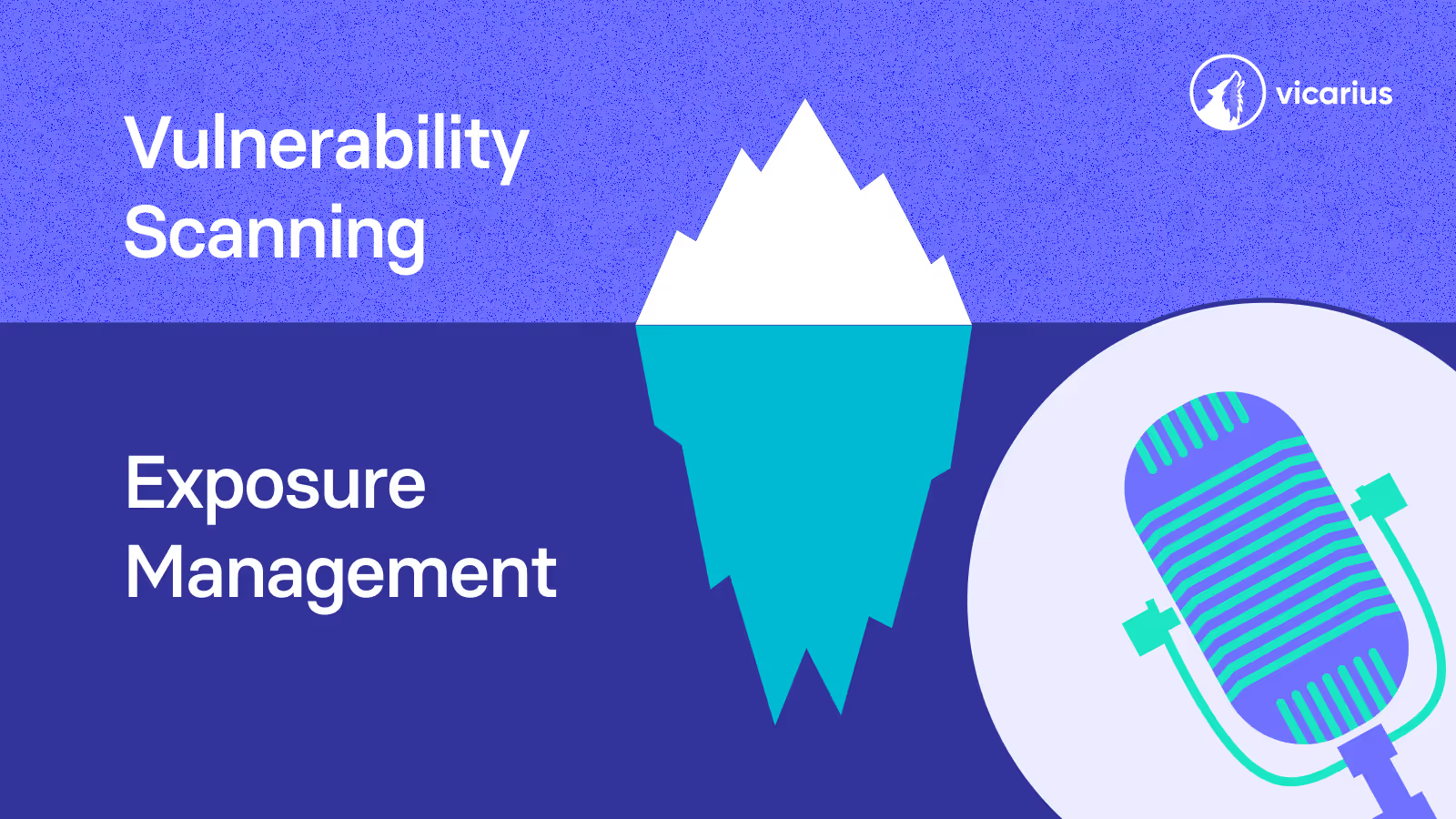
James: Welcome to the deep dive. Okay, picture this. You're leading security, maybe for a big online store. It's Friday afternoon, you're almost done, and boom, your inbox just explodes.
Katie: Right. Not with good news, I'm guessing.
James: No, definitely not. It's just this flood, this torrent of CVEs, common vulnerabilities, and exposures.
Katie: Yeah.
James: We hear a new one gets published, what, every 17 minutes?
Katie: Something crazy like that, yeah. It's relentless.
James: It feels like trying to bail out a boat with a teaspoon, honestly. The sheer volume.
Katie: Yeah.
James: It makes patching traditionally just, well, a nightmare.
Katie: It really does. You feel constantly exposed.
James: So the big question for us today is, how do organizations actually build a proper defense against this flood? How do you make it strategic?
Katie: That's the core issue.
James: Today we're diving into two areas. They're critical, but often kept separate, right? Vulnerability management and patch management.
Katie: Exactly. They often operate in totally different lanes.
James: But what we're finding, what our sources suggest, is they're really two sides of the same shield.
Katie: And that separation is the challenge. For too long, teams have just been chasing thousands of these flaws.
James: One by one.
Katie: Yeah, one by one. It's like that myth, you know, pushing the boulder uphill.
James: The synthesis.
Katie: Right. It just rolls back down. It creates this reactive cycle that's just not sustainable.
James: So what's the way out?
Katie: Well, the key insight, and what we'll really dig into, is integrating them. Using a strategy called risk-based patching.
James: Risk-based patching. OK.
Katie: It fits the script. Turns that reactive mess into proactive remediation. It's not just about being faster. It's about being smarter.
James: And the stakes are pretty high, aren't they? You mentioned something about breaches.
Katie: hugely high. Exploited vulnerabilities, they account for something like 20% of all data breaches.
James: Wow, 20%. Okay, that really hits home.
Katie: It's a massive number.
James: So I'm really curious how this integration actually works in practice. What are the details that may be surprising bits?
Katie: Yeah, there are definitely nuances.
James: And what's the real impact? On security, obviously, but also just making things run smoother. Let's unpack it.
Katie: Let's do it.
James: So let's just underline the scale of this again. Listeners, you probably know this all too well. Thousands of new CVEs every single year.
Katie: It's staggering when you think about it.
James: For the teams on the ground, it's not just a number. It's that constant background noise of alerts, right? The spreadsheet that never ever shrinks.
Katie: The endless list.
James: And you realize pretty fast that patching everything manually, it's just not possible.
Katie: No way. It's a logistical black hole. It eats up resources, time.
James: And leaves the important stuff vulnerable anyway sometimes.
Katie: Exactly right. And the, let's call it the traditional approach to patch management often makes it worse. Oh, so. Well, a lot of places have this patch everything mindset. Apply every update as soon as it drops.
James: Sounds diligent, though.
Katie: On the surface, yeah. But it causes real headaches. You get unnecessary downtime, which businesses hate.
James: Right, interruptions.
Katie: And kind of ironically, you risk leaving the really critical systems, the high impact ones, unpatched.
James: Because you're too busy with the small stuff.
Katie: Precisely. You're swamped by volume, so the low-risk things might get patched first just because they came in, while the ticking time bomb sits there. It just feeds that reactive cycle.
James: Creating this massive backlog.
Katie: Yeah, a growing backlog that actually makes you more vulnerable over time, even though you feel like you're working hard. It's like clearing a forest by cutting down every single tree instead of just the ones that are actually dead or dangerous.
James: OK, so the old way, clearly broken, inefficient, Risky. Let's pivot. The game changer you called it. Risk-based patching. Prioritizing patches based on business impact. That sounds logical.
Katie: It is.
James: But business impact, that can feel a bit fuzzy, can it? How do you actually nail that down consistently?
Katie: That's a great question. And getting that right is what makes this approach work. It's not about ignoring things. It's smart prioritization.
James: So how does it work? What factors are we talking about?
Katie: A mature vulnerability program looks at several things. You need context, asset exposure, like is this thing facing the internet?
James: Okay. Big difference.
Katie: Huge. Then business sensitivity. What data does it hold? How critical is it to operations? The vulnerability severity score, obviously.
James: The CBSS score.
Katie: Yeah, the CBSS score. But critically, you also look at, is there an actual exploit available out there?
James: Right. Is someone actively using this flaw?
Katie: Exactly. And even how complex is that exploit? Is it easy for attackers, or does it take serious skill?
James: So it's not just the raw score?
Katie: No, that's the key shift. Risk-based patching changes what urgent means. You move away from just reacting to a high CVSS score, which can be misleading sometimes.
James: How so?
Katie: Well, a medium vulnerability on a super critical internet-facing system, especially if there's an active exploit.
James: That suddenly jumps to the top of the list.
Katie: Absolutely. It could easily become priority one, way ahead of a critical flaw on some isolated internal server with no known exploit. That context changes everything.
James: And you mentioned EPSS. How does that fit in?
Katie: Right. EPSS, the exploit prediction scoring system. This adds another layer. CBSS tells you the potential impact. EPSS looks at real world threat intelligence and tries to predict the probability that a specific vulnerability will actually be exploited soon.
James: Ah, so it's predictive, like forecasting the weather for exploits.
Katie: Kind of, yeah. It tells you where attackers are likely focusing their efforts right now, not just theoretical risk. That's a huge advantage for prioritization.
James: And the benefits seem massive. I saw a Forbes piece mentioning risk-based patching can improve collaboration, efficiency, and get this reduced data preaches by up to 80 percent.
Katie: Yeah, that 80% number is pretty stunning. It highlights the potential.
James: But let's be real, what are the big roadblocks? Implementing this sounds great, but change is always tough.
Katie: It absolutely is. And probably the biggest hurdle is often just Organizational structure, silos.
James: Oh, the classic silo.
Katie: Yeah, you have vulnerability management maybe in security, patch management, over and IT operations.
James: And they don't always talk. Right. Or have the same priorities.
Katie: Exactly. It causes misalignment, delays, gaps open up. It's that not my job or waiting for the other team problem.
James: So integration is key.
Katie: Absolutely. The real power comes when you truly integrate them, aligning that vulnerability remediation directly with the business risk everyone agrees on.
James: How does that look mechanically? A unified program.
Katie: It means creating a single workflow, really, starts with knowing what you have a full asset inventory, then synchronizing all that vulnerability data, and then prioritizing based on that shared understanding of risk we talked about. Turning the giant backlog into... Into manageable cues, focused lists. But it relies heavily on unified communication, shared ways of measuring success, and definitely automation.
James: Automation seems critical here.
Katie: It is. The end goal is simple. Fix the problem before the attackers find it. Improve efficiency. Improve resilience. A single integrated defense, not bits and pieces.
James: OK, so we know why it's vital and the challenges. Let's break down the practical parts. What are the pillars needed to build this integrated proactive defense?
Katie: Right. Let's get into the how.
James: Pillar 1 seems foundational. Continuous visibility and prioritization. You need to see everything all the time.
Katie: Pretty much. Effective vulnerability management needs that continuous visibility into all your assets. Everything. Because without it... Patch management is just guesswork. You're patching blind.
James: But how does continuous visibility change the prioritization itself beyond just knowing what's there?
Katie: It makes prioritization dynamic, not static. Continuous scanning and asset discovery feed a live inventory.
James: Ah, so it's always up to date.
Katie: Exactly. It clarifies your attack surface in real time. Like that Hacker News quote said, combining visibility with risk-based patching lets teams focus on the few vulnerabilities that really matter.
James: Moving from the giant list to the critical few.
Katie: Right. And it doesn't stop there. Continuous monitoring also verifies patches after they're applied.
James: Making sure they actually worked.
Katie: Yes, and preventing configuration drift.
James: What's that?
Katie: It's when systems slowly change over time, maybe through other updates or admin actions, and they become insecure again, sometimes reintroducing old vulnerabilities.
James: Oh, OK. So continuous monitoring keeps things locked down.
Katie: It ensures your fixes stick. It makes patching an ongoing part of security, not just a periodic cleanup.
James: Okay, pillar two. Automation accelerates remediation. We know manual processes can't cope with the volume.
Katie: Not a chance.
James: They cause errors, tie up smart people. So how does automation actually make remediation better, not just faster?
Katie: That's a key point. It's not just speed. Forbes highlighted how risk-based patching uses automation to scan, prioritize, and deploy faces efficiently.
James: So end-to-end?
Katie: Pretty much. Automated tools pull in ThreadIntel, that EPSS data we mentioned, assign those risk scores based on your rules. Then the patch management engines automatically schedule the updates based on that priority.
James: Freeing up the humans.
Katie: Exactly. Freeing up staff for strategy, for threat hunting. And crucially, it allows for rapid response when a really nasty exploit suddenly appears.
James: Because the pipeline is already there.
Katie: Right. The patch pipeline triggers automatically based on risk. It brings consistency, reduces human error, ensures urgency is met. It moves teams from playing whack-a-mole.
James: Which is exhausting.
Katie: To playing chess. And believe me, after years of whack-a-mole, chess feels pretty good.
James: I bet. Okay, pillar three. Aligning people in process is collaboration. Technology isn't enough. People matter. Hugely. We need cross-functional teams. But what are the specific friction points when security and IT try to collaborate on this? And how does this integrated approach help?
Katie: That's often where things fall down. A major challenge is just different perspectives, different priorities.
James: Like security sees risk, IP sees stability.
Katie: Often, yeah. Security might scream, patch this now, while IT worries about breaking a critical application. The Hacker News noted, lots of expletive flaws stay unpatched because of these communication gaps.
James: So how do we bridge that?
Katie: The integrated approach forces collaboration. Security analysts, sysadmins, app owners, they have to work together.
James: To agree on what risk means for them.
Katie: Exactly. Align risk thresholds. Coordinate schedules. A unified program gives everyone that single shared view of risk tied to business impact.
James: So IT understands why something is urgent.
Katie: Right. VM shares priorities clearly, and PM gets the context, resources, and hopefully the approvals needed to act fast. Training helps build shared responsibility. Dashboards track progress transparently.
James: A shared mission, not separate kingdoms.
Katie: That's the goal.
James: OK, this integrated model sounds powerful. For an organization wanting to get there, what are the first practical steps? How do you start?
Katie: Good question. First, you probably need to update your vulnerability management policies, emphasize continuous assessment, not just quarterly scans.
James: Make it ongoing.
Katie: Right. Then build that complete dynamic asset inventory and crucially integrate it with your scanning tools. That's your visibility foundation.
James: Got it. Inventory first.
Katie: Then define how you'll score vulnerabilities. Context is key. Asset criticality, exposure, exploitability. Definitely bring in EPSS scoring here.
James: Make the scores meaningful.
Katie: Yes. And finally, the critical link. Integrate that scoring directly with your patch management system.
James: So the priorities flow through automatically.
Katie: Precisely. Automation and collaboration tools are the glue that make sure VM findings become PM actions consistently. It's definitely a journey, not a switch flip.
James: That makes sense. A clear path, though. Right. Now, once you're on that path, how do you know if it's actually working? What does success look like?
Katie: You need to measure it. Absolutely. Key indicators. Well, you track critical vulnerabilities found, sure.
James: OK.
Katie: But more importantly, what percentage of those critical ones are fixed within your agreed timeframes, your SLAs?
James: Ah, the remediation rate.
Katie: Yeah. And how fast are you fixing them? That mean time to remediate for high-risk issues should drop.
James: Faster fixes for the big stuff.
Katie: Right. And critically, track incidents tied to unpatched flaws. That number should plummet.
James: Fewer breach is caused by known unpatched vulnerabilities.
Katie: Exactly. Seeing overall risk reduction trend down over time, that's the real proof risk-based patching is working. As Forbes said, it significantly lowers breach likelihood. It's about proving tangible improvement, not just activity.
James: Demonstrating real security posture improvement.
Katie: That's it.
James: Okay. What a journey today. We've really unpacked how integrating vulnerability management and patch management changes the game. It's a fundamental shift through that continuous visibility, the smart risk based prioritizing the automation and getting people to actually collaborate. You move security from that frantic reactive scramble against the flood always feeling behind to a strategic proactive process, building that resilient arc. You know, I hope for you listening, this maybe shifts your perspective on that Friday night alert storm.
Katie: Yeah, the flood of CVEs, it's not slowing down. And trying to patch everything standalone just won't cut it. It leaves you exposed.
James: So this unified risk-based way.
Katie: Yeah.
James: It's not just nice to have.
Katie: No. I'd argue it's essential now for effective remediation against modern threats. It's about building a defense that actually scales, that focuses your energy where it matters most.
James: Playing chess, not whack-a-mole.
Katie: Exactly. Moving from just reacting to actively shaping your security future.
James: A powerful thought. and a much needed shift. Well, thank you for joining us on this deep dive. My pleasure. We really encourage you to mull over these insights. Maybe see how they apply in your world. We'll catch you next time.









